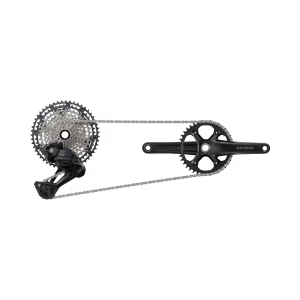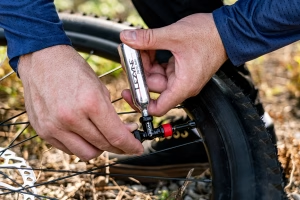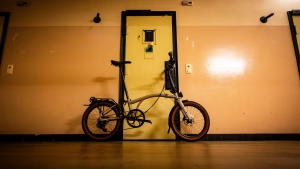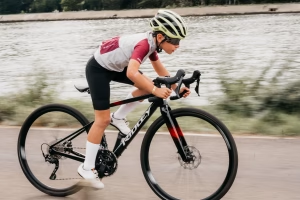Saddle pain is one of the most common cycling injuries there is. Not only is it a difficult injury to recover from, but saddle sore is also an injury that can often come back because it is sometimes not easy to find the cause of the pain. From a sore butt to a third ball to abrasions on the inner legs. In this article, I discuss 24 ways to prevent all these forms of saddle pain.
1. Adjust your saddle properly
The most important thing is to adjust your saddle properly. Make sure your saddle is the right height, make sure your saddle is level and that your saddle is far enough forward or back. If you are not sure if your saddle is in the right position, it is wise to have a bikefitting to be done.
2. Alternate standing and sitting during the bike ride
If your buttocks bother you a lot while cycling, it can help to relieve the pressure by alternating standing and sitting. This reduces the constant pressure on your buttocks and allows you to ride for longer. Try stretching your legs while standing as well, so you'll also catch a bit of stretching as a bonus!
3. Make sure you have a good chamois in your cycling shorts
There is quite a big difference between all the different cycling shorts that you can buy. The biggest difference between brands and models is usually the chamois. Generally (but obviously this balloon does not always hold true), a more expensive cycling shorts fitted with a better chamois. Chamois also differ hugely between brands. Actually, it's good to try which brand and which chamois suits you best. Do you use cycling shorts also not infinite, at some point the chamois 'runs out'.
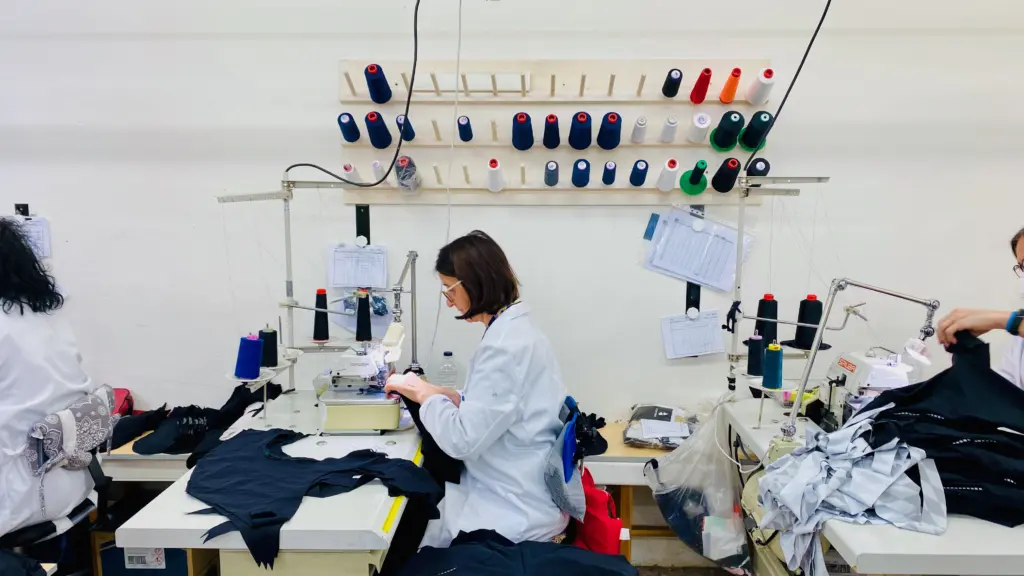

4. Make sure you are comfortable on your bike
As a cyclist, you have three points of contact with your bike. Your feet are attached to your pedals, your hands lean on the handlebars and your rear end leans on the saddle. An adjustment in the ratio of one of these three points of contact will cause you to sit differently on your bike and therefore you will suffer more or less from saddle pain. Of course, there is an ideal cycling position for everyone, in which the ratios are well distributed. When you sit perfectly on your bike, your pedalling efficiency is high, while you are also comfortable on your bike. Want to know more about bikefitting? Then read our article explaining all about bikefittings.
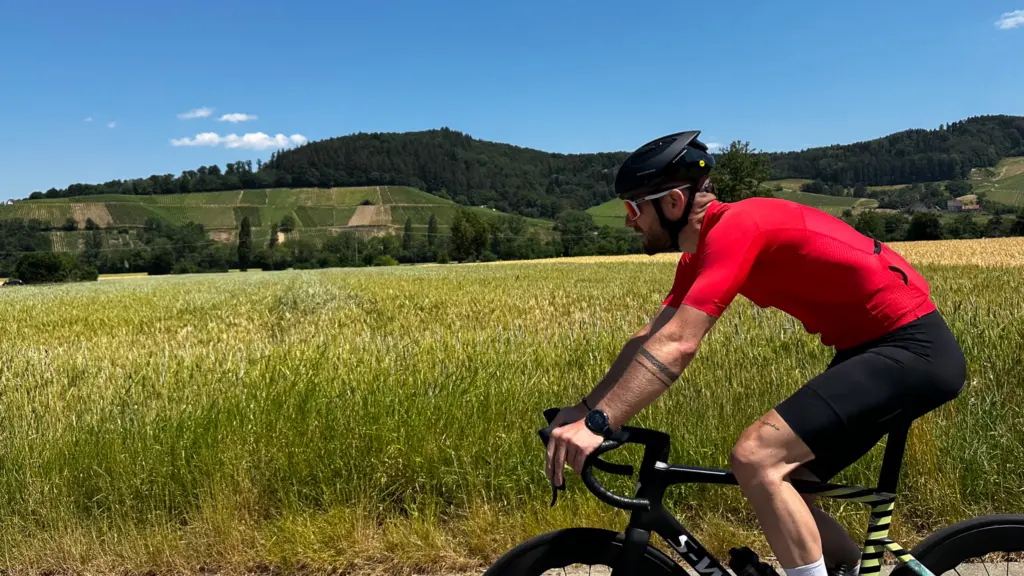
5. Make sure no seams, stitches or hem are in the way
Stitching and seams can chafe, causing irritation. So make sure you buy trousers that fit your legs perfectly. Of course, this differs from person to person; some have thicker legs than others.
6. Sit regularly
To combat the symptoms, you can change your posture while sitting regularly. Sit alternately front and back on your saddle. Alternate this every 5 or 10 kilometres to relieve the sensitive areas.
7. Sit on the back of your saddle
You can also choose to sit fully back on your saddle. That way, your pelvis tilts, you are generally more aerodynamic on your bike and you probably avoid the patches where you currently have saddle pain. Beware though; this requires a complete adjustment in your posture on the bike. So it will take some time to master.
8. The saddle is extremely important
As mentioned, the saddle is one of your body's three points of contact with the bike. The right saddle is therefore extremely important. There is a saddle for everyone. The right saddle has to do with your flexibility and what you find comfortable. It may sound surprising, but it is best to buy a saddle that is quite hard. If you have a saddle that is too soft, over time you may naturally develop problems. You sit on your sit bones while cycling, a soft saddle will cause you to sit on your fat and flesh too much.
9. Women, use a special women's saddle
There is a reason why there are special women's saddles. The pelvis, sit bones and genitals are quite different between men and women. It is therefore logical that there are special saddles for women. So as a woman, it is best to choose a special women's saddle!
10. Use chamois cream (trouser grease)
Chamois Cream reduces friction with your trousers (and saddle), making you less likely to get infections. In addition, chamois cream provides cooling on hot days. Before you sit on your bike, smear the cream on pressure points, neatly avoiding the noble parts. Many men lubricate the chamois in addition to the pressure points, so it can soak in there.
11. Wash trousers properly
Make sure you always wash your cycling shorts properly. Since you sweat quite a lot, it is wise to use an anti-bacterial detergent. Also make sure that no washing residue is left behind in the trousers that can cause problems. The chamois wears out fastest in the washing machine (tip: wash your favourite cycling shorts in a laundry bag to reduce wear). If your shorts are really worn out, it might be wise to look into buying new cycling shorts.
12. Bike without knickers
The legend of Bauke Mollema is now famous. Who appeared at his first training session wearing pants under his cycling shorts... I can well imagine that you think it's a crazy idea the first time (and the second and third times too, I suppose). It also feels crazy, such a pamper under your bottom. But once you're on the bike, you're a lot more comfortable. Pants only cause more friction and discomfort around the seat.

13. Condition skin with body lotion
Even outside cycling, it is important to take good care of the skin in sensitive areas. Lubricate the skin with body lotion, for example, as this cools and cares for the skin so that it can withstand the next ride.
14. Anaesthetic gel
If you really must cycle, for instance because you are close to a goal you have set, you can apply a numbing cream on your seat in addition to chamois cream to counteract the pain. Be careful, though, as this is only symptom relief. Make sure you do all the other things too to take care of everything. If you keep on measuring numbing gel, you have a chance that it will only get worse....
15. Use anti-inflammatory drugs
If there is inflammation, use anti-inflammatories to prevent it from getting worse. You can use special ointment to relieve the pain even when you are not cycling. If you really have inflammation, it is best to seek medical advice and not get on the bike for a while to avoid making it worse.
16. Open wound? Take good care of it
What if you have an open wound? Then it is important to put tip 19 into action anyway. Since the location of the wound is quite delicate, it is important to take extra good care of the wound. First, clean the area around the wound with alcohol or hydrogen peroxide. Even better, ask a doctor for a prescription such as Fucidine. If the wound or infection gets worse, get antibiotics from the doctor. Never ignore open wounds - treat them!
17. Talcum powder
I think you will associate talcum powder mostly with babies, and that's right. Thanks to talcum powder, they retain their oily baby skin. You can also use this for saddle sores. Apply a little talcum powder on the irritated part. It will cool the skin and bacteria will have less chance to do more damage.
18. Drying after showering
After showering, dry your skin around the seat thoroughly! This is because bacteria love a moist environment.
19. Rest
Perhaps the most important tip of all. A little rest will only do you good. Think supercompensation!
20. Resolve leg length difference
Saddle sores can also occur because you have a difference in your leg length. Often, you then have complaints on one side of your scrotum. You can solve a leg length difference by wearing insoles or shims under your shoes or in your pedals. A physiotherapist can help you solve this problem, but again, a bikefitting can work wonders.
21. Always wear clean trousers
It can be tempting to put on the same trousers again the next time after a (short) ride. This is just not very smart. Apart from the hygienic concerns you might have, used trousers will be much more abrasive than freshly washed ones due to salt residue left in them from the previous bike ride.
22. Rinse with cold water
If you always suffer a bit from saddle sores, even after cycling. Then always wash your private parts thoroughly and put the shower head with cold water on your seat at the hot end of the shower. This will cool you down and stimulate circulation.
23. Slot in the saddle
Most people think that saddles with a groove are all for women. Although these saddles are especially good for the female build, a saddle with a groove in the middle ensures that pressure is distributed properly and that blood vessels and nerves in the genitals are pinched off as little as possible. The ventilation of the saddle also gets a lot better.
24. No leather saddle
A leather saddle looks very cool and gives your bike a nice retro look. Leather saddles used to have the advantage that they breathed and adapted to the body. The downside, however, is that you have to do maintenance (keeping it supple, greasing, etc) and it is only comfortable after a while. The current generation of saddles are lighter, also breathe fine, require no maintenance and are much cheaper.
BONUSTIP 25. DO NOT shave your pubic hair
Britain's female track cyclists won one gold medal after another at the 2016 Olympic Games in Rio de Janeiro. Their secret weapon: Pubic hair. By growing pubic hair, the noble parts were better protected from friction. In addition, pubic hair ensures that sweat is discharged properly. According to the researchers, it would also apply to men, but they are too vain to admit it. So in case you have already tried everything, stop shaving your private parts!

